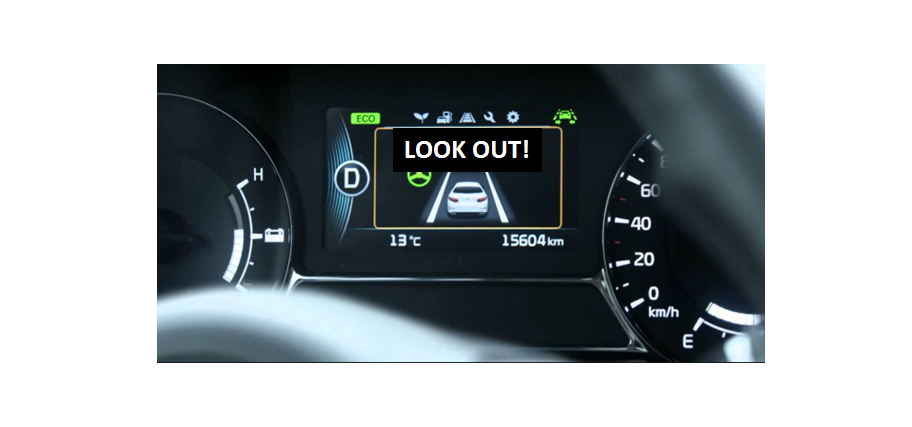 AAA is out with a new study, conducted on its behalf by the Virginia Tech Transportation Institute, that purports to show, among other things, that advanced automotive safety systems may lull drivers into a false sense of security leading to distracted driving or worse. The takeaway from this impressively elaborate study is that car makers should take greater care and responsibility in deploying these systems and training dealers and drivers.
AAA is out with a new study, conducted on its behalf by the Virginia Tech Transportation Institute, that purports to show, among other things, that advanced automotive safety systems may lull drivers into a false sense of security leading to distracted driving or worse. The takeaway from this impressively elaborate study is that car makers should take greater care and responsibility in deploying these systems and training dealers and drivers.
AAA has increasingly built its auto safety brand on widening the awareness and mitigating the impact of distracted driving – estimated by the USDOT to take upwards of 3,000 lives on U.S. highways annually. For years, AAA led the charge against smartphone use while driving, going so far as to assert that even hands-free smartphone use was hazardous and should be sanctioned – based on studies of the cognitive load on drivers.
If you are starting to get the impression that the AAA is the last organization you want in the backseat of your car on your next long trip, then you are in tune with my sentiments. At the very moment that the automotive industry is being transformed by active safety systems designed to avoid collisions, keep drivers in their lanes, or alert drivers to objects in their blind spots – AAA is sounding the alarm that drivers may be becoming over-reliant on these systems and taking their eyes off the road.
This AAA position is perfectly aligned with the Insurance Institute for Highway Safety which for years claimed that blindspot detection systems, lane keeping assistants, and automatic emergency braking solutions were failing to reduce claims rates because consumers were turning them off. So you are damned if you do (turn them on) according to the AAA and damned if you don’t (turn them on), according to IIHS.
More importantly, these two great advocates of driving safety were speaking out against the proliferation of safety systems rather than embracing them and describing how they might be enhanced.
Car companies such as Subaru, Nissan, Ford, Volkswagen, BMW, Volvo, and Hyundai that have taken the lead in deploying safety systems across their vehicle line ups and leveraging safety in their branding ought to be recognized, praised, and rewarded for having done so. The reality is that these active safety systems are being deployed by auto makers in the absence of regulatory mandates and in recognition of the fact that consumers highly value safety in their vehicles and are willing to pay for it.
In fact, consumers are so willing to pay more for safety systems in their cars that most have ignored the fact that the propensity of auto insurers fail to provide insurance incentives for adding these systems – with some exceptions. Kudos to USAA.
The fact of the matter is that cars should not hit things! Car crashes are a product flaw and any technology designed to prevent crashes – such as lane keeping, blindspot detection, and automatic emergency braking – should be on a path to universal industry adoption.
The AAA/VTTI study makes note of a variety of valuable insights ranging from the differing levels of driving capability of study participants to the varying behaviors reflected in the process of developing familiarity with new safety systems. The study also identifies the various challenges associated with different types of user experiences and interfaces for indicating when systems are turned on or off and when and how alerts are communicated.
Of course, the study is based on cars currently in the market, meaning the results of the study are nearly useless or irrelevant in the context of constantly evolving automotive safety systems. Some of the systems on the road today have driver information displays that are either too small or hidden behind the steering wheel, or may lack audible cues to go with visible indicators. And there is an unfortunate lack of consistency between car brands.
(It’s worth noting the growing adoption of driver monitoring systems globally – including the recently proposed Euro NCAP percent eye closure standard – intended to ensure future driver attentiveness.)
The revolution of active auto safety systems washing over the automotive industry is arriving in the form of increasingly inexpensive camera- and radar-based systems capable of identifying roadway obstacles and anticipating their movements. Ever more powerful on-board processing technology is allowing safety systems to deliver the kind of collision avoidance capability consumers should expect.
Over the past 10 years automotive safety advocates from the National Highway Traffic Safety Administration to AAA have taken to blaming drivers for 94% or more of all vehicle crashes. For them, it’s nearly always the fault of the nut behind the wheel.
In the absence of fully-functioning automated driving systems to remove the nut from this proposition I believe it is reasonable to expect auto makers to do their best to enable their products to avoid collisions leveraging widely available technologies. Studies like the AAA/VTTI project are useful in identifying the scope of the challenge – but pointless for arriving at a solution.
The solution lies in enhanced user interfaces, increased on-board processing capabilities, and the proliferation of vehicle sensors. All of this could be aided by a coordinated effort within the insurance industry to reward drivers that adopt, pay for, and use these systems – and that includes rewarding the auto makers that develop and deliver the systems.
It’s going to be decades before we remove that nut from behind the wheel. It’s time that we, as an industry, did our utmost to help him or her out.








Quantum Computing Technologies and Challenges